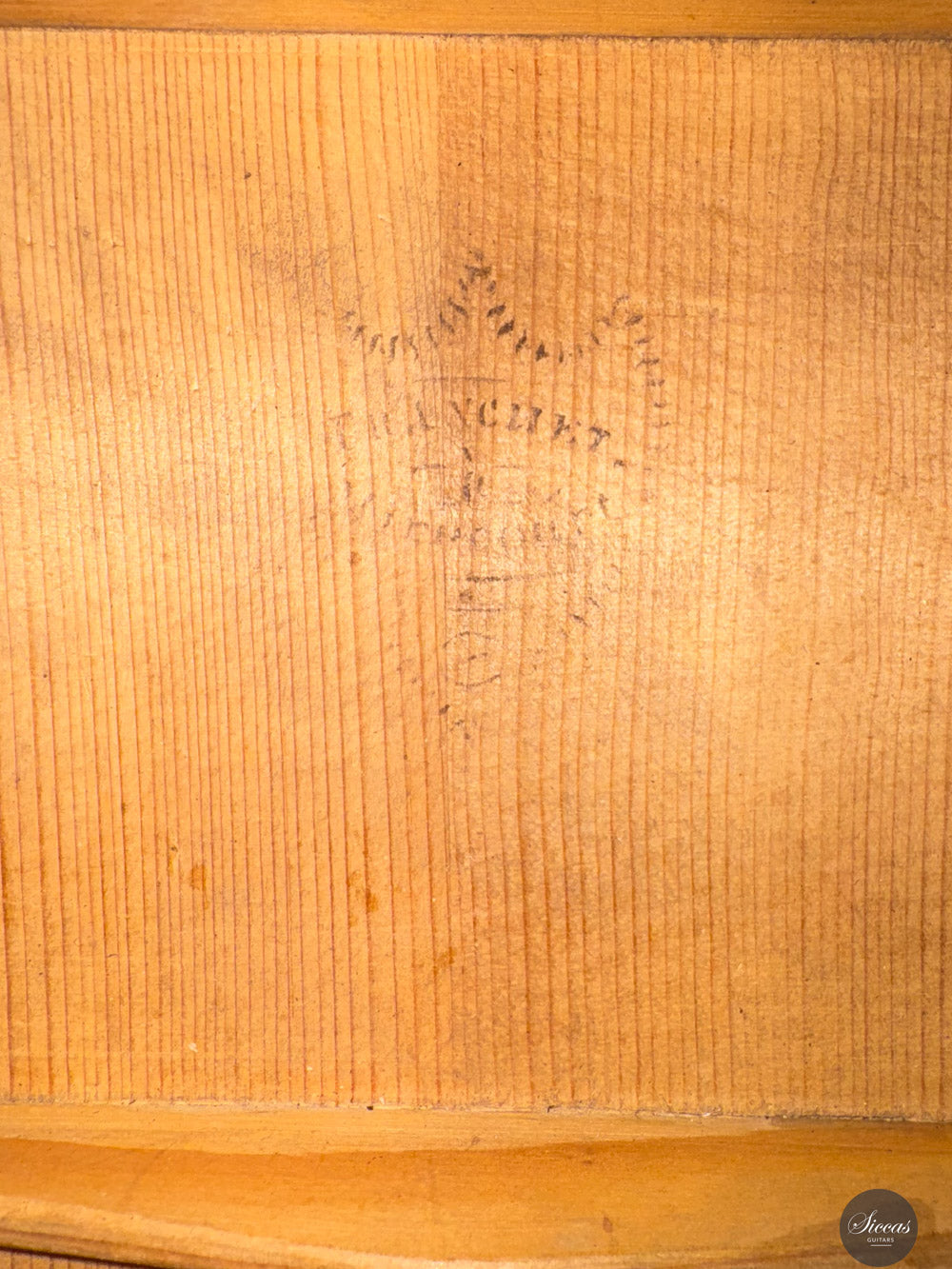Tranchet á Mirecourt - ca. 1820-1830 - Romantic guitar
Tranchet á Mirecourt - ca. 1820-1830 - Romantic guitar
Details
Details
Overview
Overview
Shipping important note
Shipping important note
Delivery times are typically reliable and most instruments arrive within the estimated timeframe.
Should any unexpected delay occur, our team will keep you informed and provide support at every step. For all shipping details and exceptions, please see our Shipping Policy.
Details about GPSR
Details about GPSR




























Video overview


More details about the guitar
About the luthier
This instrument emerges from the celebrated workshop tradition of Mirecourt in France, an epicentre of lutherie whose heritage is beautifully documented in Orfeo Magazine No. 21 (Spring 2023). From the late seventeenth century, Mirecourt evolved into a flourishing centre of violin and guitar craftsmanship, eventually shaping the distinctive French school of the nineteenth century. Built between approximately 1820 and 1830, this guitar belongs to that refined era when French luthiers achieved an ideal balance of precision, elegance, and tonal sophistication.
About the guitar
This exceptionally light and compact instrument features a spruce top with original leather bracing, backed and sided in beautifully figured flamed maple. The French‑polished finish gleams softly under light, and from its sculpted purflings to the delicate lining work the craftsmanship is refined yet wholly purposeful. The acoustic chamber is tuned to an air‑body frequency around C ♯/D, and the 640 mm scale (nut width 45 mm) yields a responsive, intimate feel under the fingers.
Tonally it embodies a deeply peaceful and contemplative character. Each note breathes freely, the first string brimming with rich overtones, and the voices merge into a soundworld that is both smooth and slightly nasal in the lower registers—hallmarks of the romantic French style. The basses possess substance rather than fading away, and the overall balance remains impressively even for an instrument of this age. As you play, it invites a moment of calm reflection rather than mere performance.
Condition
The guitar has been expertly restored with great respect for its original specifications. The weight and feel remain true, original linings, purflings, and appointments have been preserved and carefully serviced, and the instrument remains fully playable. The original case deserves mention: it also has been restored with its authentic hardware retained and a new fitted inner lining that houses the instrument perfectly. The case accompanies the guitar, completing a rare historical ensemble of exceptional integrity.
Regular care extends the life of the instrument
Even with careful use, a classical guitar may gradually change in appearance or respond to unstable storage conditions. Have a close look at your guitar regularly and be attentif to changes. If your instrument is suffering from its environement, it will let you know.
Protect Your Guitar: Handle with Care
Be mindful when touching your instrument with greasy or unwashed hands: any skin contact is a small attack on the varnish. Of course, a guitar is made to be played, but taking a few precautions helps preserve its beauty: wash your hands before playing, wear long sleeves, and avoid unnecessary direct skin contact with the body of the instrument.
Pro tip: Avoid playing with a button-up shirt, heavy jewelry, or a belt, as these can scratch the guitar. Also, make sure your guitar case is free of any objects that could damage the instrument during storage.
String care
A good habit to adopt is wiping down your strings briefly after each playing session. This small action significantly extends their lifespan and helps maintain a consistent, comfortable feel under your fingers.
Most importantly, clean strings are essential for keeping your instrument in tune. Corrosion, sweat, and dust can affect the uniformity of the strings and interfere with accurate tuning across the entire fingerboard.
Pro tip: If you're having trouble getting your guitar in tune, it might be time to change the strings. A useful test is to compare the pitch of the 12th fret harmonic with the fretted note at the 12th fret; if there's an unusually large gap between them, your strings may have lost their integrity and should be replaced.
Keep Your Shellac Finish Shining!
Got a guitar with a shellac (French polish) finish? Here's a simple trick: Take a clean microfiber cloth and gently breathe on the surface to create a light mist. Then, softly rub to remove fingerprints, sweat, and grease. That’s usually all it takes to keep it looking great, no products needed!
Pro tip: Every few years, treat your guitar to a check-up with a luthier to keep it in top shape.
Storing Your Guitar: Climate Matters
Your guitar can safely stay outside its case, as long as the surrounding environment maintains 42–55% humidity and a temperature between 18–25°C.
Keep in mind that humidity levels can still fluctuate inside the case, especially during seasonal changes.
- Too much humidity may cause overtightened strings and a dull tone.
- Too little humidity can lead to a bulging top, string buzz, or even cracks.
Avoid placing your guitar near radiators, air conditioners, or windows with direct sunlight.
Pro tip: Always close your guitar case while playing. This helps preserve a stable microclimate inside the case, so your instrument is protected the moment you put it back in.



























































